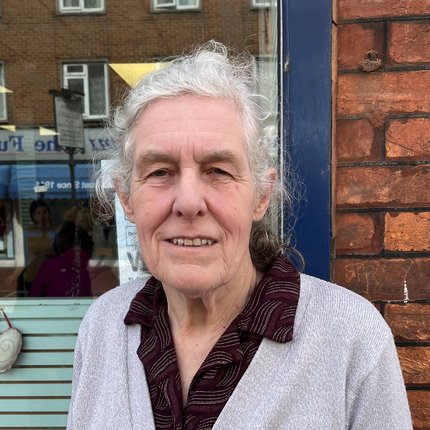Ruth Butlin - TLM Hero
Ruth Butlin - TLM Hero
Doctor, British

Ruth describes herself as having been ‘primed by the Lord’ for a life of service with The Leprosy Mission when she was a teenager.
When she was at school, she knew she was interested in mission work and working with persons with disabilities. Those inclinations found their focus when Ruth attended a talk with her youth group. The speaker was from The Leprosy Mission and the message was so powerful that Ruth left thinking, ‘this is what I have to do’.
After the talk she wrote to The Leprosy Mission to say that she wanted to work for them. The response was that she needed to finish school and get her medical qualifications first. In the meantime, they sent her the TLM Magazine and she began collecting stamps to raise money – a habit she continued until this method of fundraising was ended in 2023!
Once she had her qualifications and had done some further cross-cultural training with TLM, Ruth set out for Maharashtra, India in 1982. Whilst she was there she worked as the Medical Officer for the Miraj hospital. Her time was split between treating patients and training medical staff at the hospital’s large training centre. It was whilst working at Miraj that Ruth also had her very first taste of clinical research, something that she continues to engage with today.
In 1990, Ruth moved to TLM’s Anandaban Hospital in Nepal. She served as the Medical Superintendent at Anandaban throughout the 1990s, meaning she was in charge of the medical work at the hospital. As well as treating patients, she was responsible for planning medical programmes, hiring and training staff, some clinical research, and supporting Nepal’s National Leprosy Control Programme, particularly through training.
When Ruth joined Anandaban there were no Nepalese doctors and only two Nepalese nurses. During her tenure, Ruth set about changing this. By the time she left in 2001, Anandaban Hospital had four Nepalese doctors and many Nepalese nurses. That was a major transition for the hospital, with a legacy that continues today; one of Ruth’s hires was her fellow TLM Hero, Dr Mahesh Shah Shudi.
After working at Anandaban Hospital, Ruth took over as Medical Superintendent of Purulia for a period of two years, from 2001-2003. One of her abiding memories of her time at Purulia is of a plaque in the chapel which commemorated a missionary who had travelled to serve persons affected by leprosy in the days before there as a cure for the disease.
“Those were the real heroes, the people who left their lives on the other side of the world and came to serve people who had no hope of a cure. They had to watch their patients get worse and worse but continue to offer as much care as they could to soothe them. They did all this with the awareness that they could contract the disease themselves. Most did not, but this woman who was commemorated in Purulia did. The plaque told of how she continued to serve her fellow patients until she died.”
After her time in Purulia, Ruth moved to TLM’s DBLM Hospital in Bangladesh in 2003, where she served for four years as medical advisor. She returned to the UK in 2007 to care for her father after her mother’s passing, whilst continuing to support TLM where she could. In 2012, she returned to serve TLM in Bangladesh for a 12-month period that eventually turned into regular 2-3 month stints in Bangladesh as a volunteer until 2017.
Today, Ruth serves as a volunteer speaker with TLM in the UK and supports some of TLM’s clinical research projects, including the important COCOA study.
Over more than 40 years of service to The Leprosy Mission – and even longer as a supporter – Ruth has left a huge impact. She learnt three local languages (Mahrati, Nepali, and Bengali), served countless patients, and trained so many others to do the same. For her, however, the work and successes of others are the inspiration.
“When I worked in Miraj we would refer some of the children to a nearby TLM-run boarding school where they could get both treatment and education. We referred one boy of around 8 years old because he was having repeated cases of leprosy reaction, which made him very sick. I didn’t think about him much after we made the referral, but years later I visited Miraj again and was so gratified to find him working there. He remembered me and told me how grateful he was for the referral. That was a nice moment.
“Another group of people that inspire me are the supporters of TLM. They work so hard, pouring their time and their resources into supporting persons affected by leprosy. However, so many of them never had the privilege I did, of visiting endemic countries, of seeing patients arrive with us in suffering and leave in joy and hope. I am so inspired by how they keep their connection with this cause and remain so dedicated.”